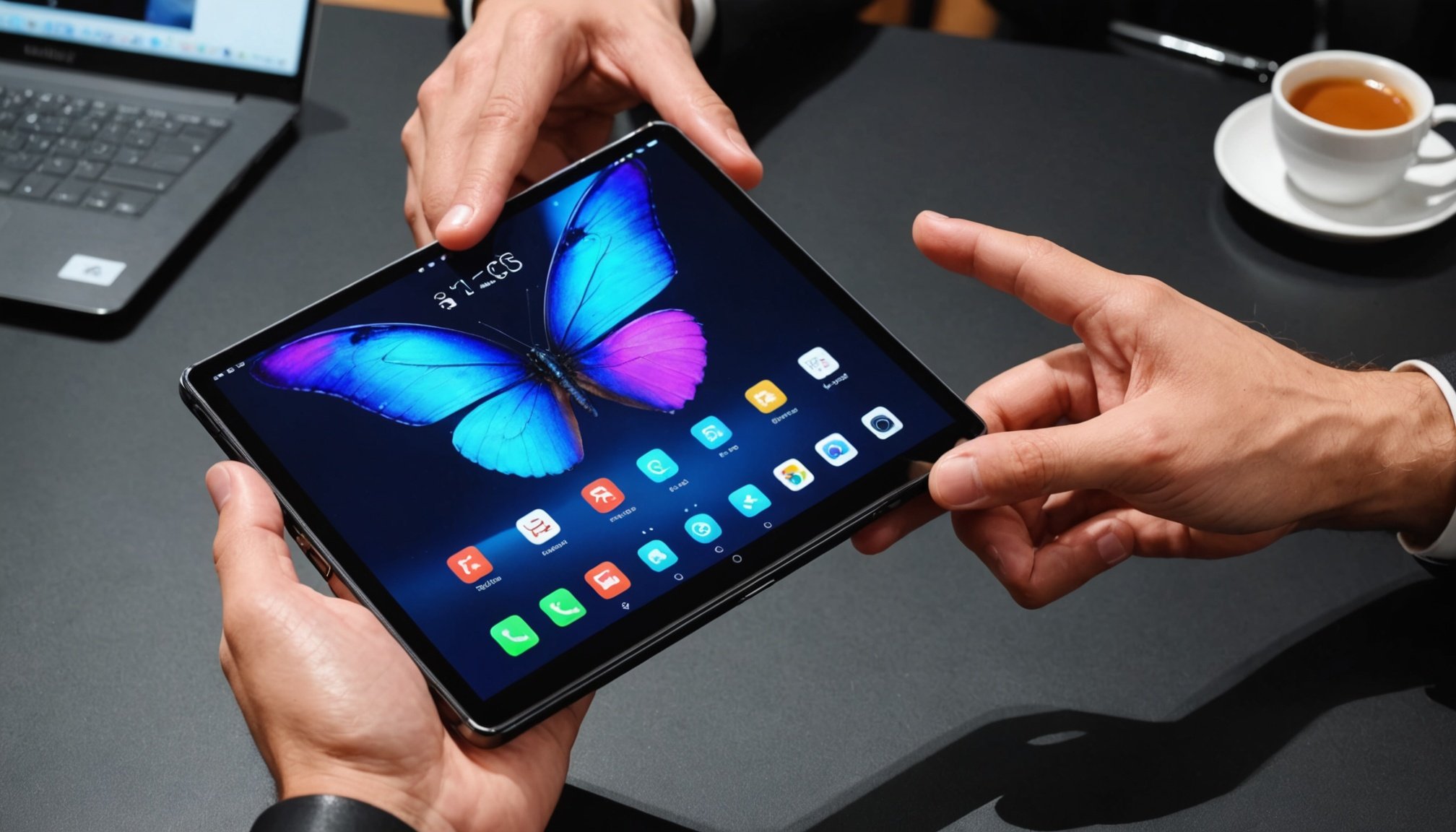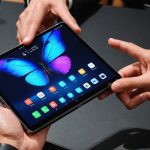Overview of Foldable Screen Smartphones
Foldable smartphones represent a significant leap in technology advancements, shifting the dynamics of modern mobile devices. Unlike traditional smartphones, these devices feature screens that can be bent or folded to provide a larger display experience without expanding the device’s physical dimensions.
The concept of foldable smartphones dates back several years, with early prototypes sparking intrigue in both the tech community and consumer markets. Today, leading manufacturers, including Samsung, Huawei, and Motorola, dominate this niche market, showcasing cutting-edge engineering.
Topic to read : Master Your Brew: The Complete Guide to Smartphone-Controlled Coffee Crafting
Recent market trends indicate a steady growth in demand, driven by consumers’ desire for innovation and multifunctionality. These smartphones integrate flexible OLED screens and sophisticated hinge mechanisms, key technologies that enable their foldability. These components balance between offering a robust user experience and maintaining device durability.
As the market evolves, continued improvements in these technologies will likely lead to more economical production and enhanced user satisfaction. With innovations such as these, the industry stands at the cusp of a potential revolution in how we perceive and utilize mobile technology. As advancements progress, foldable smartphones may become a standard, merging portability with an expansive interface in one compact package.
Additional reading : Key factors to weigh when choosing a kid-friendly smartphone
Advantages of Foldable Smartphones
Foldable smartphones offer numerous benefits that appeal to a diverse user base. Primarily, their ability to enhance multitasking is a major allure. With larger displays that unfold, users can effortlessly switch between multiple apps, making multitasking more intuitive and seamless. This capability is particularly advantageous for professionals needing quick access to emails, documents, and video calls concurrently.
Despite their expansive screens, foldable smartphones retain the portability and convenience of being a two-in-one device. When closed, they fit comfortably in pockets or small bags, offering the compactness of traditional smartphones. Yet, when unfolded, they transform into an immersive media device, making them ideal for watching films or reading eBooks on larger displays. This dual functionality negates the need for a separate tablet or e-reader.
Foldable screens enhance the overall viewing experience during media consumption. Content, especially videos and games, are showcased in vibrant detail and on a wider expanse, providing a more enjoyable and engaging experience. The innovative design allows for better ergonomics and flexibility, catering to both work and entertainment needs, making foldable smartphones a versatile choice for tech enthusiasts and the general public alike.
Comparison with Traditional Smartphones
Foldable smartphones have revolutionised mobile technology, introducing innovative designs that contrast with traditional smartphones. Structurally, foldable devices feature flexible screens and hinge mechanisms, enabling them to transform from a compact phone into a larger tablet-like interface. This dual functionality improves usability, allowing for enhanced multitasking and content interaction in ways traditional smartphones cannot offer.
In terms of performance, the processing power of foldable smartphones generally matches that of high-end conventional phones. However, there can be disparities in battery life due to the demands of larger screens. Software optimisation plays a crucial role in enhancing battery efficiency and managing app functionality smoothly across different display modes.
The user experience with foldable smartphones presents both opportunities and challenges. Navigating the interface with the option to switch between smaller and larger displays offers users flexibility but also requires adaptations in app design to suit diverse modes. Apps must be tailored to function seamlessly as users transition from a folded to an unfolded state.
Ultimately, choosing between foldable and traditional smartphones depends on personal preferences, including the desire for cutting-edge features versus familiarity and simplicity in everyday use.
Expert Opinions on Foldable Technology
Gaining insights from expert analysis and industry leaders, foldable smartphones are viewed as pivotal in reshaping future technology landscapes. Tech specialists highlight their potential to bridge the gap between mobile phones and tablets, merging functionality with cutting-edge design.
Experts note advantages, including the ability to enhance multitasking and offer expansive displays. However, critiques often centre on durability concerns, as foldable screens involve complex mechanisms. Industry leaders agree these challenges are surmountable with ongoing improvements in technology.
Pros and cons discussed within the industry frequently address cost, with many asserting that while the investment is currently significant, prices are expected to decline as production scales. The feedback highlights the necessity for durable hinges and stronger, yet flexible, materials to enhance overall robustness.
Predictions for market growth are optimistic. Experts project that consumer adoption will soar as foldable technology becomes more ubiquitous, suggesting a future where foldable screens might be the new norm. This is contingent upon overcoming current technological hurdles and increasing consumer awareness, which could reshape various use-cases.
As professionals continue to refine and innovate, the potential of foldable smartphones remains vast, capturing the curiosity of the global tech community.
User Testimonials and Experiences
Foldable smartphones have sparked diverse responses from users, each sharing unique real-life experiences with these innovative devices. Many users have praised the enhanced multitasking capabilities, citing the ability to run multiple apps simultaneously as a significant advantage. Foldable screens have allowed individuals to manage work tasks efficiently alongside personal activities, offering a dynamic and adaptable user experience.
Despite these benefits, there remains a common thread of criticism focused on certain design aspects. Users often express concerns regarding the device’s durability, especially the longevity of hinge mechanisms after extensive usage. Another frequent topic in user reviews is the learning curve associated with transitioning between folded and unfolded states, which can initially disrupt daily routines.
Positive personal stories highlight how foldable technology has elevated media consumption, boasting larger, more vibrant displays that transform viewing experiences. Meanwhile, some users express that despite initial excitement, the price point of these devices remains a hurdle, occasionally limiting their widespread acceptance and satisfaction.
Overall, foldable smartphones impact users’ daily lives in varied ways, reflecting both triumphs in technological advancement and challenges in achieving seamless integration into everyday life. The blend of innovative features continues to captivate users, who eagerly share feedback within the tech community.
Potential Drawbacks and Considerations
Purchasing a foldable smartphone involves careful deliberation on several fronts. Durability remains a prime concern, with the hinge mechanisms often being a focal point of scrutiny. Frequent folding and unfolding can lead to wear and tear, potentially compromising the device’s longevity. Repairability is another challenge, as intricate components may render repairs complex and costly.
Price point is a significant factor influencing the decision-making process. Foldable smartphones are priced at a premium compared to traditional devices, raising the question: are they worth the hefty investment? The current market conditions suggest that prices may decrease as technology matures and production scales, offering a better cost-to-value ration in the future.
Potential buyers should consider the use-case scenarios of foldable devices. Assessing personal needs, such as multitasking requirements and consumption of digital media, helps prospective users determine the value of features against their lifestyle. Additionally, it’s wise to weigh current limitations, including software adaptation and potential app incompatibilities, before investing.
Overall, understanding the drawbacks and considerations allows buyers to make informed decisions about whether the benefits of foldable smartphones align with their priorities and budgets.
Visual Representation of Foldable Smartphones
Exploring foldable smartphones through visually engaging mediums provides a deeper understanding of their design and function. High-quality images and videos are crucial to illustrate how these devices transition from compact phones to expansive displays. Capturing the unfolding process visually emphasises the sophistication and precision required in crafting these cutting-edge gadgets.
Showcase of Various Models and Their Features
Brands like Samsung, Huawei, and Motorola have launched diverse models in the foldable segment. Visual comparisons highlight their unique features, from hinge designs to display technologies. Infographics can effectively demonstrate differences in screen resolution, processing power, and battery life.
Visuals Demonstrating the Unfolding Process
Interactive media displays the transformation of foldable smartphones, underscoring key mechanisms such as hinges and flexible screens. Demonstrations focus on the seamless transition between modes, showcasing innovation and potential applications.
Infographics Comparing Specifications with Traditional Smartphones
To portray the advantages and limitations of foldable smartphones, infographics offer clear specification comparisons. Highlighting attributes like multitasking efficiency and display size against conventional smartphones assists potential buyers in making informed decisions. Through visual representation, foldable smartphones’ versatility and potential are comprehensively communicated.











